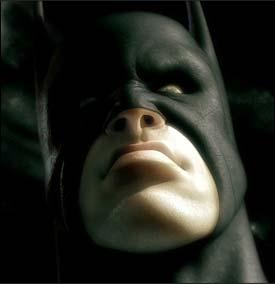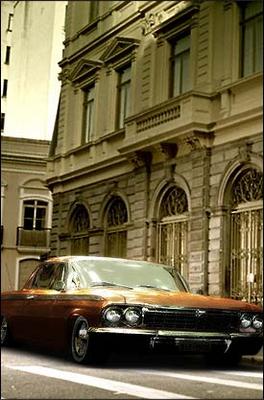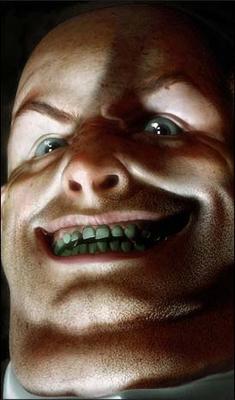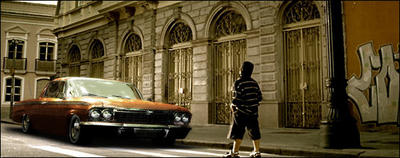Monday, July 25, 2005
Rick Thiele - 3D Artist
A 19 year old self-taught 3d artist currently living in Sao Paulo, Brazil, Rick met 3D nearly 4 years ago and started working professionaly 2 years later. He has worked for a year at Casablanca FinishHouse where he has had the privilege to work with great artists such as Mario Ucci, Luiz Adriano, Alex Doss, and Fausto De Martini. Rick is currently working at an FX House called TribboPost for a little more than a year now, where he creates CG Effects for TV Commercials. Please allow Digital-Tutors to introduce, Rick Thiele.
 Rick Thiele: I’ve been working mainly with TV Comercials, but I’ve worked with a couple of Brazilian Feature Films (“Acquaria”, “Ilha Ratimbum”). Even though I really like doing effects for commercials, it’s personal work I like doing the most. I really love the whole character creation process going from modelling to texturing to animating, etc. So you can see my work on these movies, TV, on various forums, or my site http://zy.cgartist.com.br.
Rick Thiele: I’ve been working mainly with TV Comercials, but I’ve worked with a couple of Brazilian Feature Films (“Acquaria”, “Ilha Ratimbum”). Even though I really like doing effects for commercials, it’s personal work I like doing the most. I really love the whole character creation process going from modelling to texturing to animating, etc. So you can see my work on these movies, TV, on various forums, or my site http://zy.cgartist.com.br.DT: Your style is fantastic, how would you describe it? What do you personally enjoy creating?
RT: I’m more of a fantasy/fantastic kind of guy. I really like realistic stuff, but with more of a “fantasious” feel to it. Cartoon is also one of my favorites, who doesn’t like the Pixar, Blue Sky or Dreamworks’ style?
DT: Those studios have a truly timeless style. How do you approach projects? What’s your workflow?

RT: It goes from project to project, but mainly I get loads and loads of references first, then I start modelling the volume, adding details a bit later. Depending on the project, I rig it before mapping and texturing, then while someone animates it, I UV Map it (painful stuff) and make the textures for it (also doing lighting tests while doing it). After its all animated it’s time for lighting and rendering. Also depending on the project there’s some compositing envolved.
Digital-Tutors: Your work is amazing and has incredible character, where can we see more?
 DT: What sort of tools do you use?
DT: What sort of tools do you use?RT: 3D software I like is XSI, a 2D software I like is Photoshop, but pencil and paper are also always by my side. Choosing the right tools is really important and it goes from person to person. I personally like Photoshop while others like Painter. I think you have to choose the tools you feel the most comfortable with.
DT: Which software application do you best prefer?
RT: I prefer using SoftimageXSI even though I also have Maya and Zbrush on my top list. I’ve tried most of them out, as I started using Max, but have jumped around from Lightwave to Maya...only to stay with Maya until I started working professionaly with XSI. So after it all, I chose XSI cause it’s my tool at work and also because I’m really comfortable and familiar with it.
DT: That makes sense. Where does Rick Thiele find inspiration? Where do you draw ideas from? People are dying to know.
RT: Inspiration is everywhere, you just have to learn how to observe, record, change, and adapt. You can get the best of the ideas on the dullest thing like the floor on your bathroom (true story). Additional inspiration comes from default sources like comic books, movies, other peoples work in general, etc. I think it’s always good to have alot of references in hand.
DT: With recent popularity, what do you think about the move art is making to the digital medium? Do you work most with digital or traditional?

RT: I think that all forms of art are co-related. When you develop a skill for one of these mediums it can be used in all others as well. What’s being developed is your perception, observation, creativity, your understanding of expression, forms, and art as a whole. I use the digital medium the most, probably because I work with it, but my interest in all other traditional forms of art are still there.
DT: As an artist yourself, who are some other artists you think are paving the way for the future?
RT: Artists that contribute publically with their knowledge are of an enormous help to all that strive to learn CG. Also artists that just show off their work on their site or on forums are of great help for being used as references, and of course you have “famous” artists such as Bay Raitt, Victor Navone, and others that show their work and become references to us all.
 DT: Where do you see yourself in 5 years? What are your visions and goals?
DT: Where do you see yourself in 5 years? What are your visions and goals?RT: 5 Years is a long way, but I hope to continue doing CG for as long as possible. I am always studying the craft, since it’s what I really love doing. My goal has always been to work with big Feature Films and/or Short Films. Seeing that the Brazilian CG market is constantly growing (took some big steps in the last few years) I’d say that I would probably stay where I am (if outside companies start believing in what Brazil’s FX companies have to offer), or live someplace else where I could also achieve these goals.
DT: What do you consider some of your biggest achievements to date?
RT: Being given the great opportunities of working at 2 major companies, while having so little market/professional experience has been a great professional and personal boost.
DT: And finally, what all the aspiring artists reading want to know. What advice would you give to those starting a career in art and design?
RT: Stick to it, it’s a great career. Study as hard as you can, draw/sculpt/paint as much as humanly possible and stay interested. Also don't forget your vitamins and stuff.
Comments:
Post a Comment


